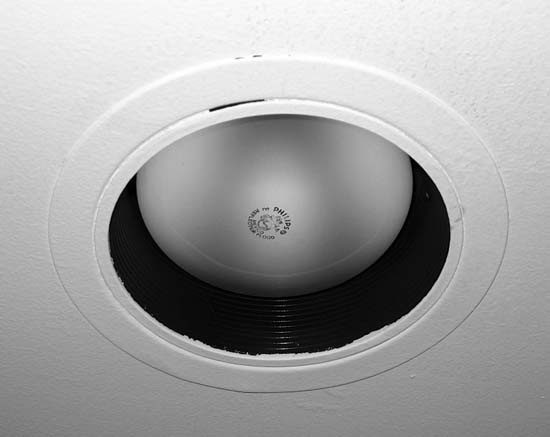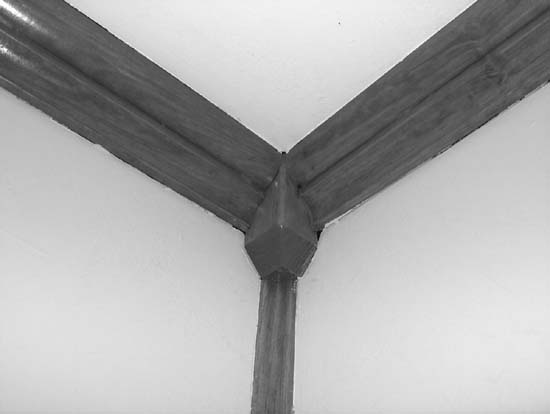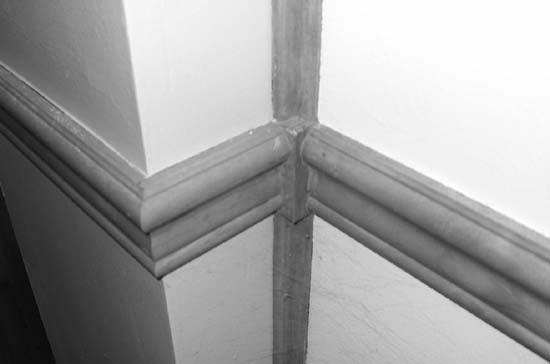Take your theater to the next level by adding creative lighting, wall sconces, seating, and decorations.
So, now you've got all the gearâtelevisions, receivers, speakers, DVD players, and the restâand you've even spent a bundle on enclosures [Hack #7] for your components. However, your theater still doesn't feel likeâ¦wellâ¦a theater. What gives?
Most likely, the answer is that you've simply got a room with great audio and video. And that, my friend, does not a theater make. You'll be amazed at what the accessories in your room can do; you'll soon find that carpet, paint, lighting, posters, and seating add up to a better experience than even some of your components! Ultimately, components are subtle things, and sound and video are in the eye (and ear) of the beholder; but everyone knows what a theater looks like!
In my experience, the bar-none best place to get room décor is the Home Theater Market (HT Market), located online at http://www.htmarket.com/index.html. These guys have the best selection, and are the most responsive, that I've found. Make no mistake: I've probably spent a few bucks more here than if I'd hunted for each individual piece online. That said, I've received stellar service, and they've even thrown in free shipping from time to time as a thanks for repeat business.
There's a more complete discussion on paint [Hack #18] in the section on video components, as you'll need to understand how lighting affects the color palette before selecting paint. Still, begin to consider how theaters are painted. You probably can't think of a single one with light colors; they're usually done in black, midnight blue, or some other deeply tinted dark color.
Also think about the ceilings of these rooms. They are almost always painted the same dark color. This is often a common mistake in home theaters; enthusiasts get the side walls right but forget about the ceiling. You also should consider removing any ceiling fans. For those of you up north, this is no big deal; but I'm in Texas, and pulling the ceiling fan was a serious decision, albeit one I think I made for the best. I probably pay a little more to air condition my theater, but it looks like a theater (who ever got up from watching a movie and got distracted by the fan over their head?).
Finally, think carefully about carpet. At a minimum, choose a dark color to go with the rest of the room. If you've got room in your budget, though, consider a themed carpet. The Home Theater Market has some killer designs available at http://www.htmarket.com/homtheatspec1.html. These aren't super cheap, but if you have someone local provide installation and the carpet pad, it's actually not all that bad.
Another major addition to any good theater is lighting. Again, the gold standard is the real movie theater. Normal in-ceiling lights just don't provide that movie atmosphere. Decorative sconces, though, are just the ticket. Once again, HT Market is the answer: http://www.htmarket.com/homtheatligw.html. You might want to brace yourself for sticker shock here, though; this stuff is very expensive. I seem to recall spending about $800 on lighting, but it was well worth it. Adding four sconces throughout the room, and placing them on a dimmer, makes for a killer setup.
Sconces rarely will provide enough lighting for your entire room, though, and often serve as effect more than anything else. For the main lighting, you might want to consider some in-ceiling pot lights (see Figure 1-14). These provide good light sources, and yet they are focused and can be precisely pointed. I personally like the areas of light that they produce, as opposed to a more general "light the whole room" approach. A good electrician can purchase and install these for a fairly low cost.
I'm a nut for posters. I have three movie frames and I'm constantly changing out movie posters in each. I'll have the Lord of the Rings trilogy one month, the Matrix trilogy the next, Star Wars the next (I'm into trilogies, can you tell?)â¦and I'm always getting compliments on the frames. For a small investment, you can pick up nice frames at HT Market: http://www.htmarket.com/posframandca.html.
The only real "gotcha" here is to ensure that you get a frame that mounts solidly to the wall, and that can be changed out easily. I prefer the brass Loc frames for a classy, yet manageably priced, theater. You can mount them to drywall or to studs in your walls, and it's trivial to pop posters in and out.
You can buy posters almost anywhere, so don't feel limited by HT Market's selection. http://www.allposters.com/gallery.asp?aid=754680 is another good source for posters, and of course Google is the ultimate resource for finding anything you want.
Home theater seating is one area where people can get a bit contentious. Some feel that the only way to really outfit a theater is with true "home theater seating." In other words, you want the bucket seats that rock back, just like you find in a theater. However, these are both fabulously expensive (more than $500 a pop in most places) and not that comfortable.
Personally, I'm a big fan of the La-Z-Boy recliner, and I think you can get a few comfy models from them, save big money, and be more comfortable. You can buy models with cup holders, so you really don't lose anything (if you're especially adventurous, add a massage chair, and you're in heaven!). So, don't get too hung up here; the main thing is to have comfortable seating that doesn't look out of place with the rest of your room.
Once you've got all of this covered, there are still plenty of little things you can add to take your theater to the very top of the elite. One of my favorites is decorative woodwork. Most hardware stores offer all sorts of decorative chair rails and molding. If you're so inclined, this sort of thing can really class up a room. Figures 1-15 and 1-16 show some of the woodwork in my theater; notice the fancy-looking joints. This is pretty easy to do; just cut a small rectangle and attach it to the wall, and then join the molding at the wood block. Add a little bevel to the rectangle, and you add yet another level of sophistication.
Another small, but easy, touch is ensuring that everything matches. Wood finish is so cheap these days that you can easily ensure that your end tables, shelves, cabinets, and woodwork are all the same color. This brings the room together, and helps make things look as though they belong. You'll have lots of other ideas, as well: experiment, and go with what works.
Get Home Theater Hacks now with the O’Reilly learning platform.
O’Reilly members experience books, live events, courses curated by job role, and more from O’Reilly and nearly 200 top publishers.




